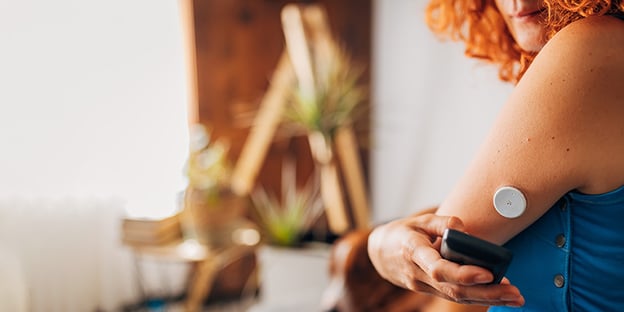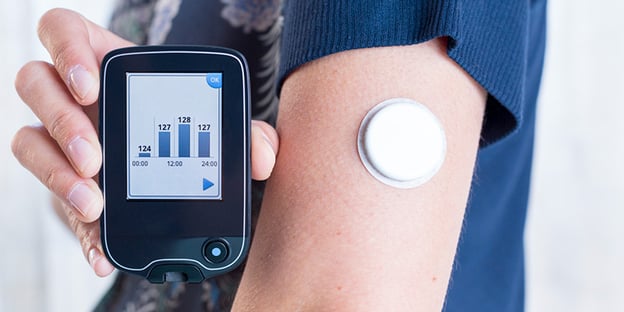If you’ve recently been diagnosed with prediabetes, you may have a lot of questions — and a few concerns. What does prediabetes mean to your health and your future?
First, the good news: Having prediabetes isn’t a guarantee you’ll be diagnosed with Type 2 diabetes. Below we’ll explain the disease, what the diagnosis means, and how you can keep it under control.
What Is Prediabetes?
Prediabetes is a condition where blood sugar levels are higher than normal, but not quite high enough to be considered Type 2 diabetes. It’s generally considered a precursor to developing Type 2 diabetes but can also increase your risk for heart disease and stroke.
Prediabetes is very common, affecting 1 in 3 American adults. And as prediabetes becomes more prevalent, it’s starting to affect new demographics. About 18% of adolescents now have prediabetes, putting them at risk for developing Type 2 diabetes before adulthood.
However, 80% of people with prediabetes are unaware they have it.
This might seem shocking, but it does make sense: If you’re not regularly checking your blood sugar levels (and people who have not been diagnosed with diabetes generally don’t), there aren’t always many visible signs of prediabetes. Some people with prediabetes, however, do have some of the symptoms of diabetes, including darkening in some areas of the skin.
Risk Factors for Prediabetes
While prediabetes can happen to anybody, certain factors increase your chances of getting the disease, like:
- Being overweight
- Being 45 years old or above
- Having a parent or sibling with Type 2 diabetes
- Being physically active less than three times a week
- One or more occurrences of gestational diabetes (diabetes during pregnancy)
- Giving birth to a baby who weighed more than 9 lbs.
- Having polycystic ovary syndrome (PCOS)
Your racial background can also affect your chances. African Americans, Hispanic/Latino Americans, American Indians, Pacific Islanders, and some Asian Americans are at increased risk of developing prediabetes.
Diagnosed With Prediabetes: Now What?
 The very first thing you should do after being diagnosed with prediabetes is not panic: It’s not too late to reverse this. Early treatment and lifestyle changes can help you return your blood glucose levels to a normal range, which means if you take the right steps, you may never develop Type 2 diabetes at all.
The very first thing you should do after being diagnosed with prediabetes is not panic: It’s not too late to reverse this. Early treatment and lifestyle changes can help you return your blood glucose levels to a normal range, which means if you take the right steps, you may never develop Type 2 diabetes at all.
How to Reverse or Prevent Prediabetes
If you have just been diagnosed, or have some risk factors for prediabetes, lifestyle changes can make a big difference in your health outlook. Many of these are the same lifestyle changes used to manage a current diabetes diagnosis.
Weight Loss
To reverse prediabetes, you may need to lose some weight. But that doesn’t mean you have to go on a drastic diet. According to the CDC, losing just 10 to 14 lbs. through changes in food and movement can help reduce your risk of developing Type 2 diabetes by 58%.
Eating smaller, more frequent meals with plenty of fiber, protein, and complex carbs like vegetables can stave off hunger pangs while also preventing glucose spikes. And being active is key. Find an activity you genuinely enjoy, like walking, dancing, or swimming, so working out several times a week feels fun instead of like a chore.
If lifestyle changes don’t work, some people also look to weight loss surgery, which has been shown to reduce prediabetes.
Medication
Another option is medication, including metformin, which decreases the amount of glucose your body absorbs from your food and the amount of glucose your liver makes in the first place. It also helps your body respond properly to insulin, a natural substance that controls the amount of glucose in the blood.
Other Lifestyle Changes
Other factors like high stress levels and smoking can increase the risk of insulin resistance, making prediabetes more likely.
Also, don’t overlook sleep. Studies show that even one night of sleep deprivation can lead to increased hunger and cravings, making it that much harder to resist the siren call of the snack cupboard.
Make sure to consult your healthcare team for their recommendations on how to attempt to reverse your prediabetes, and regularly check in with them about your progress so they can adjust the plan and recommend other interventions, if necessary.
The Role of Continuous Glucose Monitors (CGMs) in Managing Prediabetes
 One tool that may help is a continuous glucose monitor (CGM). A CGM is worn under the skin to automatically monitor blood glucose levels, and it’s usually worn by people who have already been diagnosed with diabetes. But, depending on your situation and how long you’ve been managing prediabetes, your care team may consider it as an option. If so, here are the benefits you can expect:
One tool that may help is a continuous glucose monitor (CGM). A CGM is worn under the skin to automatically monitor blood glucose levels, and it’s usually worn by people who have already been diagnosed with diabetes. But, depending on your situation and how long you’ve been managing prediabetes, your care team may consider it as an option. If so, here are the benefits you can expect:
- Immediate feedback: You’ll know in real time how your blood sugar reacts to what you eat and how you move, so you can alter your diet or behavior to help reduce blood sugar spikes.
- Analysis of Trends: Does your blood sugar dip when you sleep? Does it spike when you eat cereal, but not toast with peanut butter? These are factors that could be unique to you that you might not ever know without an ongoing peek at your blood sugar trends.
- See what’s working: Have your blood sugar levels returned to normal after losing 10 lbs., or are other measures needed? A continuous glucose monitor can give your healthcare team the information they need, so they can tell what’s working and what you might need to change.
- No finger pricks: Some people with prediabetes manage the disease by testing their blood glucose levels multiple times a day with old-fashioned finger sticks. But this is painful, inconvenient, and messy. With a CGM, you automatically get blood glucose readings all day long, without having to prick your finger. That gives you valuable insight you and your health care team can use to help you reverse your prediabetes.
It’s important to look at a prediabetes diagnosis as an opportunity, not a definitive stamp that marks you as doomed to get Type 2 diabetes. It’s a chance to take proactive steps toward better health. And with early intervention, it might be easier than you think to reverse the condition entirely. Simple lifestyle changes like modest weight loss and increased physical activity have been shown to work wonders. And tools like continuous glucose monitors (CGMs) can help you see how your changes are working in real time, so you can adjust where needed.
Want to find out how a CGM can help you manage and reverse prediabetes? Our CGM guide walks you through the options so you can choose one that works for you.

Ready to get your CGM? We can help!



 The very first thing you should do after being diagnosed with prediabetes is not panic: It’s not too late to reverse this. Early treatment and lifestyle changes can help you return your blood glucose levels to a normal range, which means if you take the right steps, you may never develop Type 2 diabetes at all.
The very first thing you should do after being diagnosed with prediabetes is not panic: It’s not too late to reverse this. Early treatment and lifestyle changes can help you return your blood glucose levels to a normal range, which means if you take the right steps, you may never develop Type 2 diabetes at all. One tool that may help is a continuous glucose monitor (CGM). A CGM is worn under the skin to automatically monitor blood glucose levels, and it’s usually worn by people who have already been diagnosed with diabetes. But, depending on your situation and how long you’ve been managing prediabetes, your care team may consider it as an option. If so, here are the benefits you can expect:
One tool that may help is a continuous glucose monitor (CGM). A CGM is worn under the skin to automatically monitor blood glucose levels, and it’s usually worn by people who have already been diagnosed with diabetes. But, depending on your situation and how long you’ve been managing prediabetes, your care team may consider it as an option. If so, here are the benefits you can expect:




